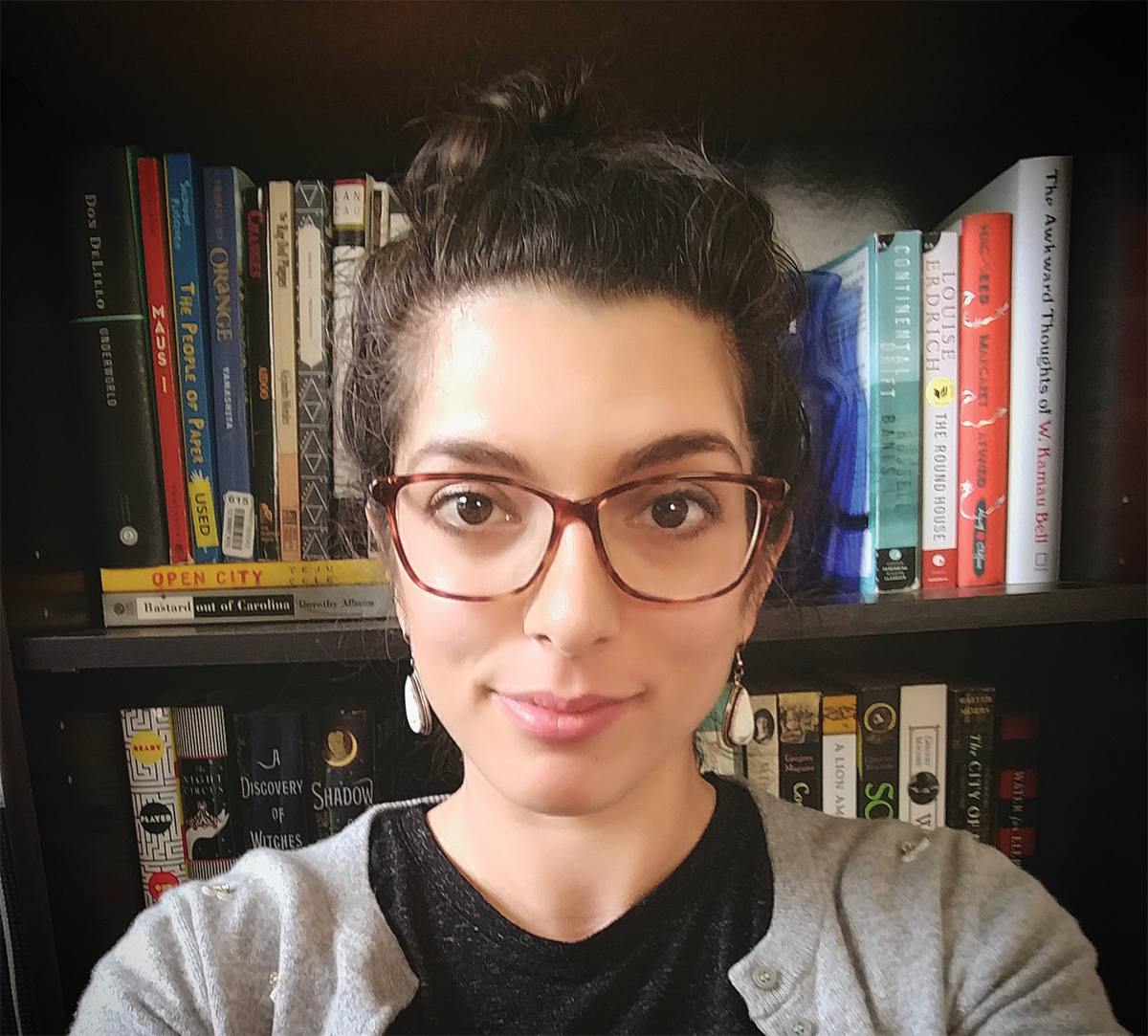
by Angela Rovak, Doctoral Candidate, Department of English
Even before she turned ten years old, Octavia E. Butler knew she was destined to be a writer. In an interview with The New York Times in 2000, Butler recalls that,
"When I began writing science fiction, when I began reading, heck, I wasn't in any of this stuff I read. I certainly wasn't in the science fiction. The only black people you found were occasional characters or characters who were so feeble-witted that they couldn't manage anything, anyway. I wrote myself in, since I'm me and I'm here and I'm writing. I can write my own stories and I can write myself in."
Over the course of her career, Butler certainly did write herself in with over a dozen novels, collections of short stories, as well as essays and speeches on science fiction. Beyond her published work, Butler left behind thousands of pages of drafts, notes, journal entries, correspondence, and annotations after her untimely death in February 2006 at age 58.
The Huntington Library, Art Collections, and Botanic Gardens in San Marino, California received 354 boxes worth of Butler's papers, all of which were opened to the public for research in November 2013. With the generous support of a CSWS research grant, I was able to spend two weeks in August 2017 at the Huntington Library immersed in Butler's papers. I was conducting research for my dissertation, "'Make Something Besides a Baby': Race, Gender, and Reproductive Science in 20th Century Black Women's Novels" that argues that black women writers across the century not only respond to reproductive science and policy in their given eras but create theories of reproductive justice within their writing. I worked to collect materials for my chapter, "Octavia Butler's Speculative Genomics," that uncovers the genetic and biological science within two of Butler's published works: the antebellum time-travel novel Kindred (1979) and the critical utopia trilogy Xenogenesis (published as Dawn [1987], Adulthood Rites [1988], and Imago [1989]). I intended to comb through Butler's papers for references to the science she engaged to help craft her stories. What I found was this and so much more.
In Butler's papers I discovered how she thought about and revised her early drafts of Kindred in response to the cultural phenomenon of Alex Haley's Roots. While Roots insisted that the nation to reckon with its racist history during the American bicentennial, it also inspired thousands of African Americans to seek their own roots, to trace their genealogy in search of a narrative beginning in Africa. According to Alondra Nelson, sociologist of race in the genomics era, "Roots generated excitement around family history; it encouraged the democratization of a practice that had previously been the provenance of the nobility." Similar to Haley, Butler was preoccupied with ancestry, kinship, and genealogy in Kindred. In the novel, protagonist Dana inexplicably time travels back to antebellum Maryland when her white, slave owning ancestor Rufus's life is endangered. She must save him repeatedly in order to ensure the propagation of her own family line. In seeing the ways Butler reacted to Roots has allowed me to understand Kindred as a critical response to the wave of genealogical interest as she insists that the past is never easily or fully recovered.
Butler's interest in genetics and DNA extends to her next major published book project, the Xenogenesis trilogy. After a nuclear war that left the Earth devastated and uninhabitable, a passing alien species takes pity on the surviving humans and removes them from the planet. For generations they've travelled the stars in search of new life that they can learn from and trade with—diversifying their genetic forms across the universe. But the Oankali do not simply take, they trade. Their intervention into human affairs also spells the end of humanity as we know it. Humans will now only reproduce and rebuild the species as genetic hybrids – what the trilogy calls constructs – mixtures of human and Oankali DNA. And Lilith, the protagonist of the first installment Dawn, must convince her fellow humans to accept this new world. While the series directly engages with genetic science and genetic engineering, fields that were blossoming during the years Butler drafted the trilogy, I was surprised to find an even more robust engagement with the biological sciences. Butler thought deeply about two topics—slime mold and HeLa cells—as inspiration for her novels. Both slime mold and HeLa cells engage in endless reproduction and one of Butler's intentions with her series was to think through how that power could be harnessed for the betterment of humankind.
My original research plan only sought to bring me to this point. Unexpectedly, I discovered an additional trove of valuable information thanks to the suggestion of a fellow researcher at the Huntington. Between the publications of Kindred and Xenogenesis, Butler spent the early 1980s drafting a novel that would never be published: Blindsight. This novel follows the life of a young white boy, blind but gifted with a sort of second sight called psychometry. The protagonist Aaron can read people's lives and minds through touch. As Aaron grows up and begins marketing his services to the public, he discovers the ability to perform "ancestor searches." In moving backward through the experiences and memory of his client, he could reach "conception, and for me, painful separation. Again it was painful because I could not know ahead of time whether I would become her father or her mother. I felt caught between the two, stretched, pulled, torn…"
In many respects, Blindsight bridges the scientific ideologies of Kindred and Xenogenesis, combining root seeking with genetic science. From my visit to the Octavia E. Butler archive, it is clear that Butler engaged robustly with genetic and biological sciences beyond my original estimation and my findings have already shaped my dissertation in unexpected and exciting ways. I look forward to continuing to sort through the materials I've collected, to publish my work on Blindsight, and I hope to return to the archive in the future to uncover more of the rich material Butler left behind.
—Angela Rovak is a doctoral candidate in the English Department at the University of Oregon. In Spring 2019 she will defend her dissertation, "'Make Something Besides a Baby': Race, Gender, and Reproductive Science in 20th Century Black Women's Novels," which argues that black women's fiction creates theories of reproductive justice pertinent to their historical era. Her article, "Speculative Black Maternity: Ntozake Shange's Sassafrass, Cypress & Indigo and Fran Ross's Oreo" is forthcoming from Tulsa Studies in Women's Literature.
End Notes
1. "Visions: Identity; 'We Tend to Do the Right Thing When We Get Scared'", The New York Times, 1 Jan 2000.
2. Nelson, Alondra. The Social Life of DNA: Race, Reparations, and Reconciliation After the Genome. Boston: Beacon, 2016.
3. Blindsight: novel: "original" draft, 1984, OEB 179B, Box 14, Octavia E. Butler Papers, Huntington Library, Art Collections, and Botanic Gardens, San Marino, CA. Accessed 2 August 017.

